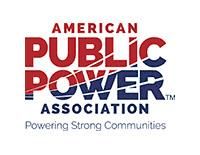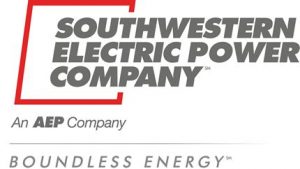
What, if anything, can utility marketers learn from companies that are not in the business of providing electricity, natural gas or water? Longtime readers know my views on that: lessons are everywhere, from insurance companies to football teams, airlines and telecommunications companies. You just have to be open to the potential that some company not engaged in the provision of utility services could have a meaningful insight that could affect utility marketing.
“You could observe a lot by just watching,” Yogi Berra (right) once said. I was reminded of that particular head-scratcher the other day, when I was standing in line in my local credit union.
Normally I conduct business at the credit union using their drive-through window, but on this particular day I had to transact a more complicated piece of business. I thought I would be out the door quickly, so I left my mobile device in the car. Deprived of that omnipresent tool of digital distraction, I found myself checking out the newly remodeled credit union branch.
I observed a lot just by watching.
Utility Marketing: Learning from a Non-utility
The walls of the Elevations Credit Union are adorned with posters, banks of video displays and a new slogan — “It matters where you bank.” The copy points highlight the fact that Elevations is a locally owned financial institution with deep roots in the community. They are Boulder Valley’s community financial partner.

The new messaging and the fresh look, accompanied by a TV advertising campaign, is differentiating Elevations from other financial institutions, both Colorado-based and local offices of multinational financial behemoths like JP Morgan Chase and Wells Fargo.
Then I thought about the scandals that have consumed Wells Fargo. Suddenly I was glad I did business locally with a credit union. It did, in fact, make a difference where I banked.
Elevations’ marketing does not say, “Choose us because we’re not those other guys and we won’t do anything shady.” Instead, it gives positive and meaningful reasons for choosing to do business with a locally owned financial institution. For example, I love the way tellers at Elevations’ drive-through windows ask if they can give my dog Callie a biscuit. Would I get that if I banked at Wells Fargo or JP Morgan Chase?

Not only is Elevations’ messaging fresh and positive, it also is edgier and funnier (and thus more memorable) than before. Check out one of their ads (left). Unlike utilities, which fret over the cost per kilowatt-hour of electricity or therm of natural gas, Elevations doesn’t linger on quantitative things like the interest rate on its home equity line of credit. It begins marketing by appealing to the heart before it tried to appeal to the head.
I believe utility marketing and advertising could be more effective it if took itself less seriously. In addition to the posts referenced above, here’s another idea for injecting a lighter touch into utility marketing Why not use humor, kids or animals to separate yourself from your rivals? It’s a time-tested formula.
Utility Marketing: Finding a Compelling Point of Differentiation
I called up Chris LaVelle, an assistant vice president for marketing at Elevations, to learn more about my credit union’s approach to marketing. He told me this:
We decided to accentuate our role as a community based financial institution five or six years ago and it has been a bit of an evolution ever since. We had always been very involved in our community in terms of sponsorships, donations to non-profits, giving scholarships to University of Colorado students, etc. but our brand and messaging didn’t align with that. We had lost our way a bit with our brand and so we decided to do a reset.
We had an eye-opening moment when we were doing focus groups as part of our branding research. We asked consumers to name companies with whom they loved to conduct business. They listed all local businesses such as Lefthand Brewery, Spyder, Celestial Seasonings and the list went on.
We asked them who they bank with and almost everyone listed either Chase or Wells Fargo. We then asked them why they didn’t bank locally. Their response was amazing: Almost everyone told us that they were not aware of a good local option. At that point we knew we had definitely lost our identity over the years and needed to get back to being a local financial institution that is focused on giving back to the communities that we serve.

Elevations’ insights are absolutely applicable to providers of electricity, gas and water. It’s a lesson electric cooperatives never forgot. Increasingly, public power utilities are working with their customer-owners to raise awareness about public power, largely because market research conducted by the American Public Power Association revealed a large portion of customers served by public power utilities didn’t know their provider was locally owned and why that made a difference.
If you stick around long enough in any industry, all that’s old will be new again. Twenty years ago, as the first bracing winds of electric restructuring threatened to disrupt the ordered world of electric and gas monopolies, lots of folks (myself included) emphasized the need for utilities to differentiate themselves from rivals. Create a compelling connection to customers, I recommended in something I wrote long ago.
Communications Tip: Utility marketers could learn a lot from observing how marketers in other industries build powerful connections to customers. Start with the heart. Connect with customers there before trying to roll out fact-based reasons customers might like to do business with you.
Reconsidering Utility Marketing: Competitive Threats Drive Thinking, Doing
Now is a good time for a fresh look at utility marketing, especially a utility’s brand promise, that bundle of attributes that are meaningful to customers (or potential customers). We have a few simple recommendations:
- Have a distinct voice in your market
- Stand for something unique and meaningful to all stakeholders, including customers (or members), investors, employees and others who are affected by your business
- Be different — and better from your competitors
- Differentiate yourself, or risk being defined by your rivals
Some utilities are, in fact, revisiting various aspects of their marketing. Some are refreshing logos or taglines. Others have changed their name. Everyone’s trying to figure out the right social media channel. And a select few are doing the really hard work of fundamentally re-envisioning why they exist and how they create value, and how that could or should change.
Here are a few examples of utility marketing that are, to some degree, being refreshed:
-

Credit: Southwestern Electric Power Company Eversource Energy (formerly Northeast Utilities)
- Duquesne Light Company
- Indiana Michigan Power and Southwestern Electric Power Company (both AEP subsidiaries)
- Operating units of The Southern Company
- Dominion Energy (formerly Dominion Resources)
Today, utilities continue to face new versions of perennial strategic threats. Mergers, both friendly and unfriendly, continue to winnow the number of utilities. Some state electric markets that restructured, like Texas and Pennsylvania, continue to experience a high level of competition, with new entrants seeking to win market share from incumbent providers.
But newer competitive threats, spurred by changes in technology, regulation and customer expectations, give utilities of all stripes new reasons to strengthen bonds with their customers/members by differentiating themselves from rivals old, new and as yet unseen. Programmable thermostats, distributed energy resources (mainly rooftop solar), electric storage and the ability to purchase backup electric generators from any DIY store are all examples of non-utilities trying to get between an electric provider and its customers.
Judging from conference talks I have heard over the last year, those non-utilities are having some success. While many utility executives think first, last and always about the cost per kWh of electricity, therm of gas or hundred cubic feet of water, Nest Labs and other non-traditional competitors have a different approach to creating value in the consumer’s mind. And they seem to be gaining traction.

Ben Bixby, an executive at Google’s Nest Labs, told a recent utility conference I attended, “We get into people’s homes on the basis of comfort and convenience, and then we deliver on the promised energy savings.” Bixby said the most important factors driving a customer’s Nest learning thermostat purchasing decisions were, in order of importance, comfort, convenience, energy savings and style. For most consumers, he added, energy savings are an after-the-fact rationale for buying a new gadget that looks cool.
Like Yogi Berra, Martin Luther King Jr. said many quotable things. One of King’s quotes I am particularly fond of is, “The time is always right to do the right thing.” Words to live by, in any age and in any business. Is it time to for utilities to revisit and potentially refresh the way they market themselves? If the last review and refresh took place 10 or even 20 years ago, I’d say the answer is certainly yes.

